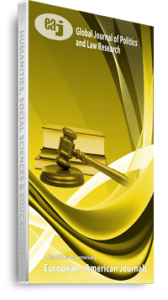Over and again the result of studies, confirmed by verifiable evidences of development projects around the world, especially in resource-rich developing countries, continue to demonstrate that extractive industrial operations (EIOs), such as petroleum (oil and gas) and other mineral resources development operations, have colossal negative effects on the environment, human wellbeing and society at large. EIOs essentially inhibit sustainable development (SD). Accordingly, such result of studies, corroborated by pragmatic evidences, are revealing that if EIOs are governed by international benchmarked standards and practices, these operations would contribute to good environmental governance (GEG), improved human wellbeing and overall SD, especially in resource-rich developing countries. Thus, this socio-legal study examines how international benchmarked environmental democracy may boost GEG and improvement of impact-benefits, through Impact-Benefit Agreements, towards sustainable community development (SCD) vis-à-vis improved wellbeing of the oil-rich Delta region and other oil producing areas of Nigeria, as well as sustainable petroleum development operations in Nigeria’s oil producing communities. On this note, the study makes a case for classic environmental democracy (espoused in Principle 10 of the Rio Declaration on Environment and Development, 1992, and elaborated in the Aarhus Convention, 1998) and SD-oriented impact-benefit schemes in the course of petroleum development operations in Nigeria’s oil producing communities, so as to balance the adverse effects and benefits of these operations in the communities, towards overall GEG, good governance and all-encompassing SD in Nigeria.
Citation: Edward T. Bristol-Alagbariya and Uzuazo Etemire (2021) International Benchmarked Environmental Democracy and Impact-Benefit Agreements towards Sustainable Community and Petroleum Development in Nigeria’s Oil Producing Communities and Sustainable Development in Nigeria at Large, Global Journal of Politics and Law Research, Vol.9, No.8, pp.20-53

